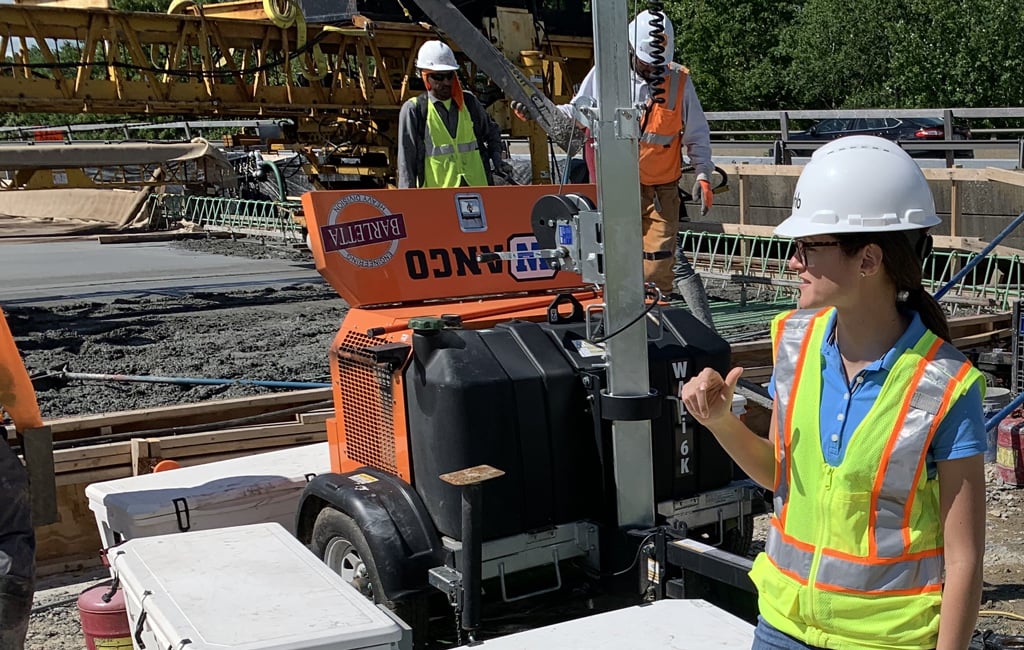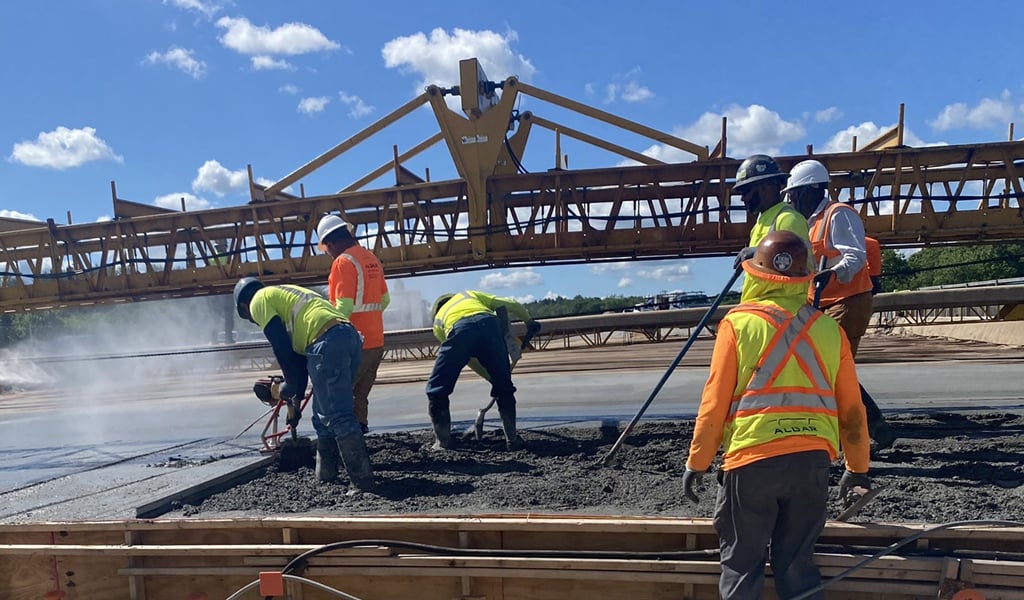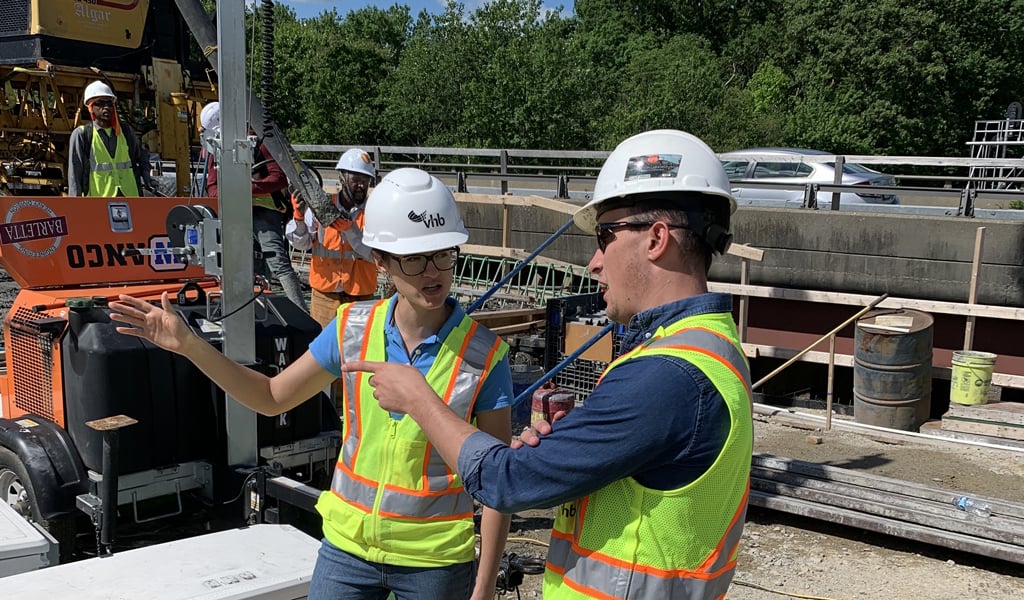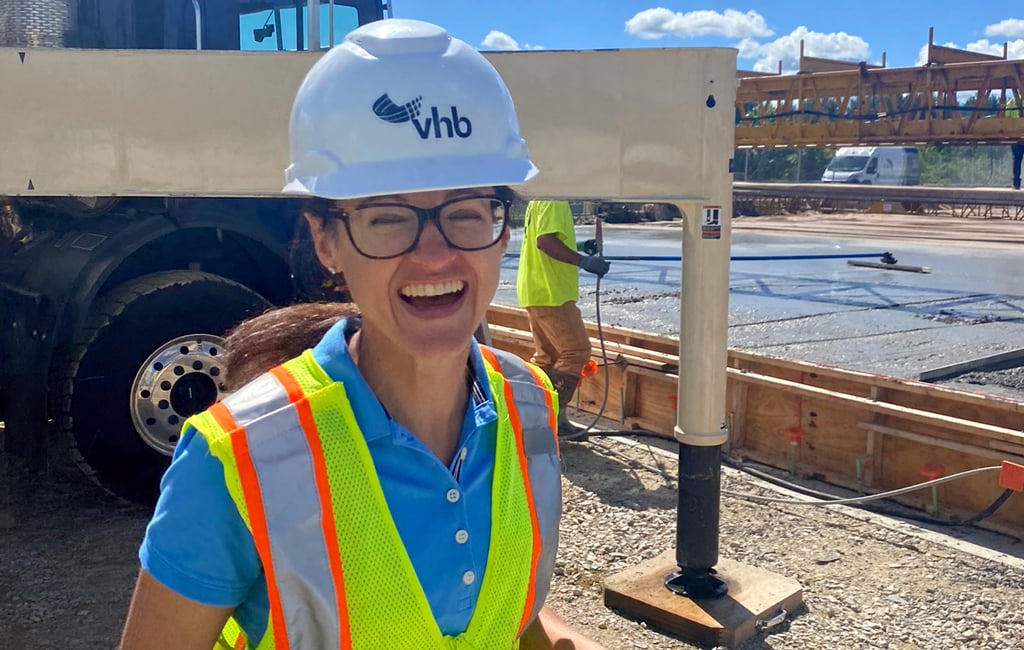Forward-thinking insights focused on a more sustainable tomorrow.
Concrete Matters: How Communication Yields Constructible Designs and Collaboration
Olivia is a collaborative partner with the Massachusetts Department of Transportation (MassDOT), aiding in the development of concrete standard specifications and updates to the MassDOT Bridge and Preservation Manuals. This collaboration initiated her exploration into materials engineering and fostered strong relationships with MassDOT staff, contractors, and concrete producers. She leverages this experience and these connections to deliver integrated, constructible structural engineering designs.
Her innate curiosity about materials engineering is Olivia’s “superpower,” driving her desire for continual learning and spurring collaboration. She proactively communicates with everyone from concrete suppliers to clients to construction partners, which fosters her ability to make others feel comfortable communicating with her. These qualities make Olivia an exceptional liaison in major infrastructure projects, including her role as Deputy Lead Structural Engineer on MassDOT’s I-495/I-90 Interchange Improvement design-build project. This is Olivia’s story.

The Role of Materials in Constructability
At VHB, we pride ourselves on our integrated services, which contribute to holistic, efficient, sustainable, and constructible designs for our clients. As design engineers, my peers and I are always reminded to consider constructability in our designs, focusing on efficiency, ease, practicality, and cost-effectiveness. I want to take a closer look at a critical component of constructability: materials.
As engineers, we push ourselves to consider how our designs will be constructed but don’t always fully examine the specifics of which materials will be used to build them. Design engineers often rely on the department of transportation (DOT) or agency to determine materials specifics—such as concrete mix, steel coatings, and waterproofing. These materials determine the durability, longevity, sustainability, and construction cost of a structure, and design engineers can positively impact projects if we consider them more.
Constructability isn’t just about weight and geometry. While specifying higher strengths of concrete or steel may result in calculations that work on paper, the practical implications of these material choices must also be fully examined. Materials specifications should not be secondary to design; fully accounting for constructability includes considering material aspects, such as concrete mix for specific uses.
Infrastructure improvements benefit from project-specific materials consideration and more coordination between the DOT and design engineers. I urge engineers to reach out to DOT materials engineers to discuss the use of a new concrete mix or coating before specifying it in a design. Collaboration and partnership with materials engineers are key to expanding our constructability skills. There are many materials engineers and concrete producers who work with these materials daily; design engineers can learn from them. They will appreciate our curiosity and desire to understand their aspect of the industry. Awareness of material complexities helps make our bids more competitive, simplifies the DOT design feedback process, and will result in more construction cost savings.

How Materials Influence My Designs
Though not a materials engineer, I have cultivated a basic understanding of materials throughout my career, especially during my work with MassDOT to develop concrete standards and update its Bridge and Preservation Manuals. This work required me to learn about concrete industry challenges. While I re-read old textbooks and many online publications, the best insight I got was from talking with people. Industry leaders offer great input, but it was the personnel on the plant floor producing and placing concrete every day that offered the most valuable insights. I asked the basic questions, I listened to their challenges with the current concrete mixes, and I took what I learned back to the office so I could incorporate this feedback into the new specifications.
This knowledge now influences my structural designs. A best practice I employ is to research a concrete mix before specifying it on design plans. Research questions I pose include:
- Which plants near the project produce mixes that meet this specification?
- What is the cement content of the mix?
- What pozzolans (silicate-based materials that can replace a portion of cement in concrete mixes) are being used?
- What is the actual strength achieved at 28 days?
- Do we need mass concrete placements on the project?
- Have producers developed a Low Heat version of this mix that can meet the specifications?
This approach has been integral for MassDOT’s I-495/I-90 Interchange Improvements design-build project in Hopkinton and Westborough, Massachusetts. The project includes 12 bridges and 32 walls reconnecting two highways to alleviate congestion.
My understanding of materials was helpful when MassDOT transitioned to new concrete mix specifications months into the project. This presented a hurdle for our contractor, Barletta, and our concrete suppliers, since the new mixes were unfamiliar to the industry and had not yet been used for mass concrete placements. Of the 12 bridges on the project, 11 require mass concrete placements, so it was important to the team to use concrete mixes that have been tested in the industry for some time, especially when it came to mass placements.
To work through this challenge, leveraging my relationship with the materials department at the DOT, I was able to coordinate a discussion. Using open lines of communication, the project team worked directly with the DOT’s materials department and the concrete producer to come to a consensus on the best approach for concrete mixes on a project of this size. Ultimately, we were able to use mixes that Barletta and the supplier were familiar with and that were tailored to mass placements, which helped us to keep the project on schedule and make certain that our structures would last.

The Importance of Communication
My journey to understanding materials engineering underscores an often-lacking capability in engineering communication. Asking questions and engaging with fellow engineers, contractors, and materials producers has enabled me to bridge gaps and unify project teams, elevating project collaboration.
Structural engineers, materials engineers, concrete producers, and contractors all aim to create durable structures but often operate in silos. Effective communication breaks these silos, fostering inter-firm partnerships that enhance collaboration and inform each firm's work. The result is infrastructure that is more constructible, efficient, and long-lasting, with partnerships that create a more sustainable future.

Reach out to me via email or LinkedIn to learn more about creating communication channels between designers, clients, contractors, and materials producers. Let's stay curious and build something great together!



